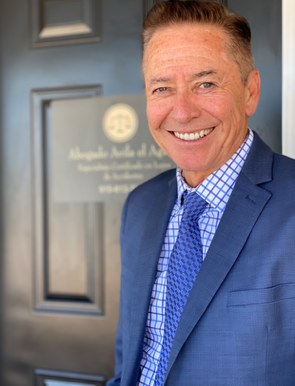Ever try hailing a taxi cab in Los Angeles?
Not exactly NY in terms of number of cabs or ease of which to find one, but they do exist. This is why ridesharing services like Uber and Lyft have done so well.
In the past, getting a taxi in LA was pretty tricky. You typically had to call ahead of time to get in a queue to make sure you are picked up on time and arrive at your destination on schedule, or relied on whatever time they arrived if calling on the spot.
The taxi business can be pretty cutthroat in that each taxi driver is essentially their own franchise and they must lease the vehicle in order to pick up fares and be able to charge customers. They don’t own the vehicle or the service, but have the right to operate it. They work with tight margins and higher operating standards, which hurts their ability to profit. Taxi drivers often have routes or designated places where they pick up like airports, or they work with folks directly like hotel clerks who regularly call taxi cabs for guests in order to generate business.
This is unlike ridesharing services, where the owner of the vehicle is in charge of their own fares and uses a mobile app to find fares. They don’t have to lease their vehicle, and they can choose when and where they want to be available. The ridesharing services also have less strict rules regulating them and lower standards for drivers to operate. Making the ridesharing driver their own boss with a higher profit margin.
Taxi drivers typically site that the ridesharing services are not as safe and don’t have the same types of standards and insurance that taxi drivers must carry. They often argue that these apps get around
What are the differences between taxi cabs and ridesharing services?
One of the main differences in California is that the taxi cab drivers are required to submit for background check including fingerprinting, which is maintained in a database and helpful in case of an accident or theft. Ridesharing drivers are not required to submit for fingerprint screening, which taxi cab companies say could put consumers at risk.
Price is taxicab another consideration. Studies have found that taxi cabs are typically more expensive than ridesharing services, which makes the ridesharing apps more enticing.
They also have differences in what their reason for operating. Taxi drivers argue that their services are must better than ridesharing declaring their drivers are more experienced, well regulated, and adhere to strict background checks. Their counterparts in ridesharing say it’s a good opportunity non-taxi drivers to earn some extra money, they have better technology, and good internal review system.
Taxis are often regulated by the city or county, restricting them to only pick up fares in those designated areas, whereas the ridesharing services can pick up riders from anywhere, giving them a distinct competitive advantage.
How are services like Uber and Lyft the same as Taxis?
There have been some major pushes, mostly by the taxi industry, to regulate the ridesharing services in the same way as the taxi services. In California, new laws went into effect last year requiring the ridesharing services to perform similar background checks as the taxi services. This compliance came with some decent fines for companies with any drivers that haven’t pass the additional checks, but stopped short of required fingerprinting, which is something that the taxi industry requires today.
Uber and Lyft are a lot like Taxi cabs in that they can pick up folks and take them where they want to go, but they are not allowed to just pick up anyone like a Taxi could. Uber and Lyft have specialized apps that must be used in order to call for service, which is how they get around a lot of the Taxi laws, but both can pick up passengers from the same location and drop off in the same spot.
What happens if there’s an accident in a taxi or ridesharing?
Accidents do happen, even with professional drivers. It may not be the driver’s fault, but if an accident does occur, there are certain things that the passenger should do regardless if they are in a Taxi, Uber, or Lyft ride.
Seek medical attention – even injuries that don’t seem severe on the outside could linger internal for years
Take pictures and collect information immediately – name of driver, license plate, company name, and accident details
Call 911 or file a police report depending on severity – police may be called to the scene or reports can be filed afterwards
Don’t talk to insurance companies without consulting an attorney – they may push you to settle for less than you deserve
What types of insurance coverage differences are there for Taxi Cabs vs Uber?
Taxi Cabs = Required to have minimum total coverage $1,000,000 per vehicle, per accident, for any liability towards injury, death, or destruction of property, and no less than $100,000 for individual bodily injury, plus $50,000 for property damage.
Uber Ridersharing = There are two periods in which passengers are covered. One is when the passenger accepts ride while the driver is logged into the app, but the driver or rider hasn’t accepted yet. This period is unique in California and requires drivers to maintain a 3rd party coverage of $50,00o per individual, $100,000 per accident, and $30,000 for property damage. The second period is when the the ride has been accepted in the app by both the driver and rider is physically in the car. At that point, the company’s liability insurance of $1,000,000 dollars kicks in. That coverage is consistent across the country and in some states higher than the required taxi coverage, but in California both are required the same minimum amount.
If you want to discuss coverage from an accident please contact us today for a free consultation.



